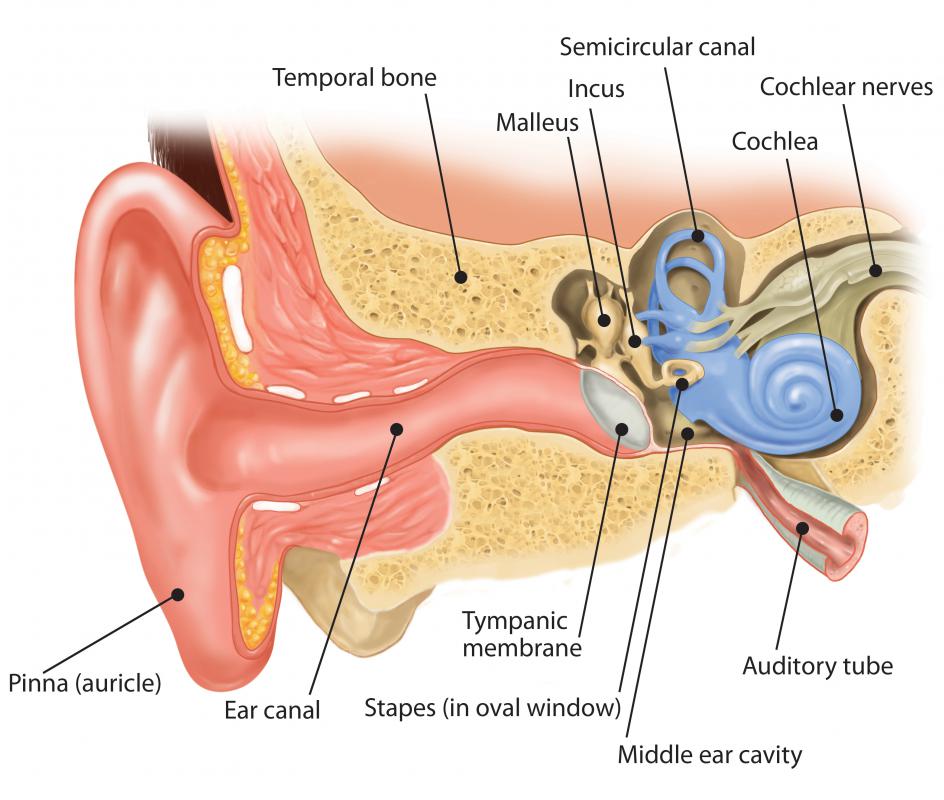At WiseGEEK, we're committed to delivering accurate, trustworthy information. Our expert-authored content is rigorously fact-checked and sourced from credible authorities. Discover how we uphold the highest standards in providing you with reliable knowledge.
What is the Saccule?
The saccule is a small sac located in the inner ear. It consists of a bed of sensory cells and is responsible for translating head movements into neural impulses. These impulses are then interpreted by the brain. The saccule is particularly sensitive to the up and down movements of the head. This is important to the sense of balance, or equilibrium.
Gathering sensory information and helping to orient the body in space is the primary function of the saccule. It also serves to gather information concerning linear movement in the vertical plane. Hair cells located in the inner ear are the structures that enable the saccule to gather this vestibular information.

Neural impulses traveling from the saccule move through the vestibular portion of the eighth cranial nerve and end at the vestibular nuclei located in the brain stem. The vestibular system consists of the saccule, three semicircular canals, and the utricle. These organs, responsible for maintaining a sense of balance, are housed in a fluid-filled duct known as the vestibule. The temporal bone in the skull houses this vestibule.

There are two vestibular sacs located in the inner ear. The saccule is the smaller of these two sacs. The saccule is located near the scala vestibuli of the cochlea. The scala vestibuli is the part of the inner ear responsible for conducting sound vibrations to the scala media portion of the ear.
The cavity containing the saccule does not communicate directly with that of the uticle. Instead, it exhibits a thickening, known as the macula acustica sacculi. Saccular filaments are then distributed to the vestibular branch of the acoustic nerve. This nerve is often referred to as the cranial nerve VIII or the vestibulocochlear nerve.
Hair cells containing hair bundles are found within the macula. These bundles are composed of a single kinocilium as well as several stereocilia. A kinocilium is a type of cilium that is found on the apex of hair cells in the inner ear. Stereocilia are modifications of cells located in the inner ear.
The stereocilia are connected to ion channels in the hair cell plasma membrane. Located between the hair cells are supporting cells which secrete the otolithic membrane. This membrane consists of a thick gelatin-type layer of glycoprotein. The otolithic membrane is covered by crystals of calcium carbonate called otoliths. This is the reason the saccule is sometimes referred to as an otolithic organ.
AS FEATURED ON:
AS FEATURED ON:












Discuss this Article
Post your comments